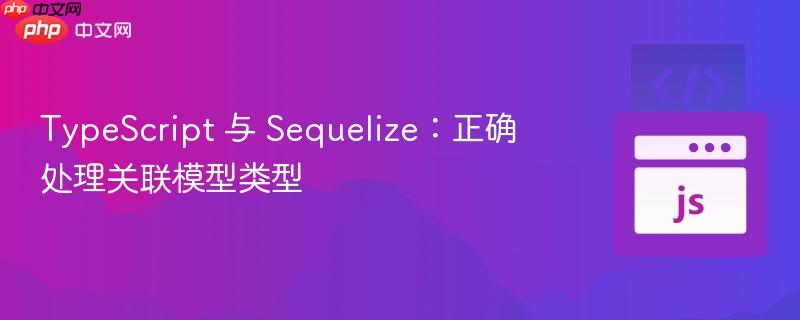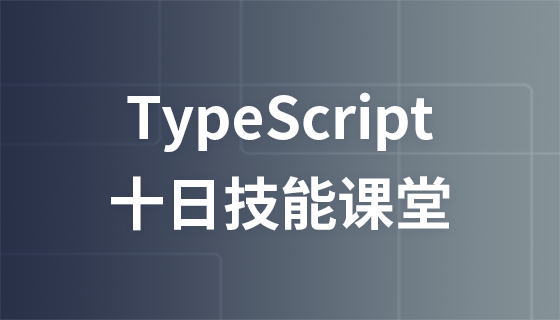
本文旨在解决在使用 TypeScript 和 Sequelize 进行数据库操作时,如何正确处理关联模型类型,避免使用 `any` 关键字的问题。通过定义关联属性,并结合 `NonAttribute` 类型,可以确保类型安全,提升代码可维护性。本文将提供详细的步骤和示例代码,帮助开发者更好地理解和应用这些技术。
在使用 TypeScript 和 Sequelize 构建应用程序时,处理模型之间的关联关系是常见的任务。然而,在关联模型中正确使用类型定义可能会遇到挑战,尤其是在避免使用 any 关键字的情况下。本文将详细介绍如何通过定义关联属性,并结合 Sequelize 提供的 NonAttribute 类型,来确保类型安全。
当模型之间存在关联关系时,例如一个 Student 可以拥有多个 Task,我们需要在模型接口中定义这些关联属性。假设我们有 StudentModel 和 TaskModel,并且它们之间存在一对多关系。
首先,我们定义 StudentModel:
import { Model, DataTypes, InferAttributes, InferCreationAttributes, CreationOptional } from 'sequelize';
import { sequelizeConn } from './sequelize'; // 替换为你的 sequelize 实例
interface StudentI extends Model<InferAttributes<StudentI>, InferCreationAttributes<StudentI>> {
id: CreationOptional<number>
name: string
age: number
}
const StudentModel = sequelizeConn.define<StudentI>("student", {
id: {
type: DataTypes.INTEGER,
autoIncrement: true,
primaryKey: true
},
name: {
type: DataTypes.STRING(64),
allowNull: false
},
age: {
type: DataTypes.INTEGER,
allowNull: false
}
})
export default StudentModel接下来,我们定义 TaskModel,并在其接口中添加 student 属性,使用 NonAttribute 类型:
import { Model, DataTypes, InferAttributes, InferCreationAttributes, CreationOptional, NonAttribute } from 'sequelize';
import StudentModel from './StudentModel'; // 引入 StudentModel
import { sequelizeConn } from './sequelize'; // 替换为你的 sequelize 实例
interface TaskI extends Model<InferAttributes<TaskI>, InferCreationAttributes<TaskI>> {
id: CreationOptional<number>,
student_id: number,
definition: string,
student: NonAttribute<StudentModel> // 定义关联的 Student 属性
}
const TaksModel = sequelizeConn.define<TaskI>("task", { // 修复了模型名称的错误
id: {
type: DataTypes.INTEGER,
autoIncrement: true,
primaryKey: true
},
student_id: {
type: DataTypes.INTEGER,
allowNull: false
},
definition: {
type: DataTypes.STRING(64),
allowNull: false
}
})
export default TaksModel在上面的代码中,NonAttribute
在 associations.ts 文件中,我们建立 StudentModel 和 TaskModel 之间的关联关系:
// associations.ts
import StudentModel from './StudentModel';
import TaksModel from './TaskModel';
StudentModel.hasMany(TaksModel, { foreignKey: "student_id", as: "tasks" });
TaksModel.belongsTo(StudentModel, { foreignKey: "student_id", as: "student" });现在,我们可以查询 TaskModel,并包含关联的 StudentModel,而无需使用 any 关键字:
// randomFile.ts
import TaksModel from './TaskModel';
import StudentModel from './StudentModel';
async function getTaskWithStudent(taskId: number) {
const task = await TaksModel.findOne({
where: {
id: taskId
},
include: [
{
model: StudentModel,
as: "student"
}
]
});
if (task) {
if (task.student.age == 15) { // 现在可以安全地访问 task.student.age
console.log(`Task ${taskId} is assigned to a student aged 15.`);
} else {
console.log(`Task ${taskId} is assigned to a student aged ${task.student.age}.`);
}
} else {
console.log(`Task with id ${taskId} not found.`);
}
}
// 示例用法
getTaskWithStudent(1);在这个例子中,task.student.age 可以直接访问,因为我们在 TaskI 接口中定义了 student 属性,并使用了 NonAttribute 类型。
通过在模型接口中定义关联属性,并使用 NonAttribute 类型,我们可以避免在使用 TypeScript 和 Sequelize 处理关联模型时使用 any 关键字。这种方法不仅提高了代码的类型安全性,还增强了代码的可读性和可维护性。请记住,正确的类型定义是构建健壮应用程序的关键。
以上就是TypeScript 与 Sequelize:正确处理关联模型类型的详细内容,更多请关注php中文网其它相关文章!

每个人都需要一台速度更快、更稳定的 PC。随着时间的推移,垃圾文件、旧注册表数据和不必要的后台进程会占用资源并降低性能。幸运的是,许多工具可以让 Windows 保持平稳运行。




Copyright 2014-2025 https://www.php.cn/ All Rights Reserved | php.cn | 湘ICP备2023035733号